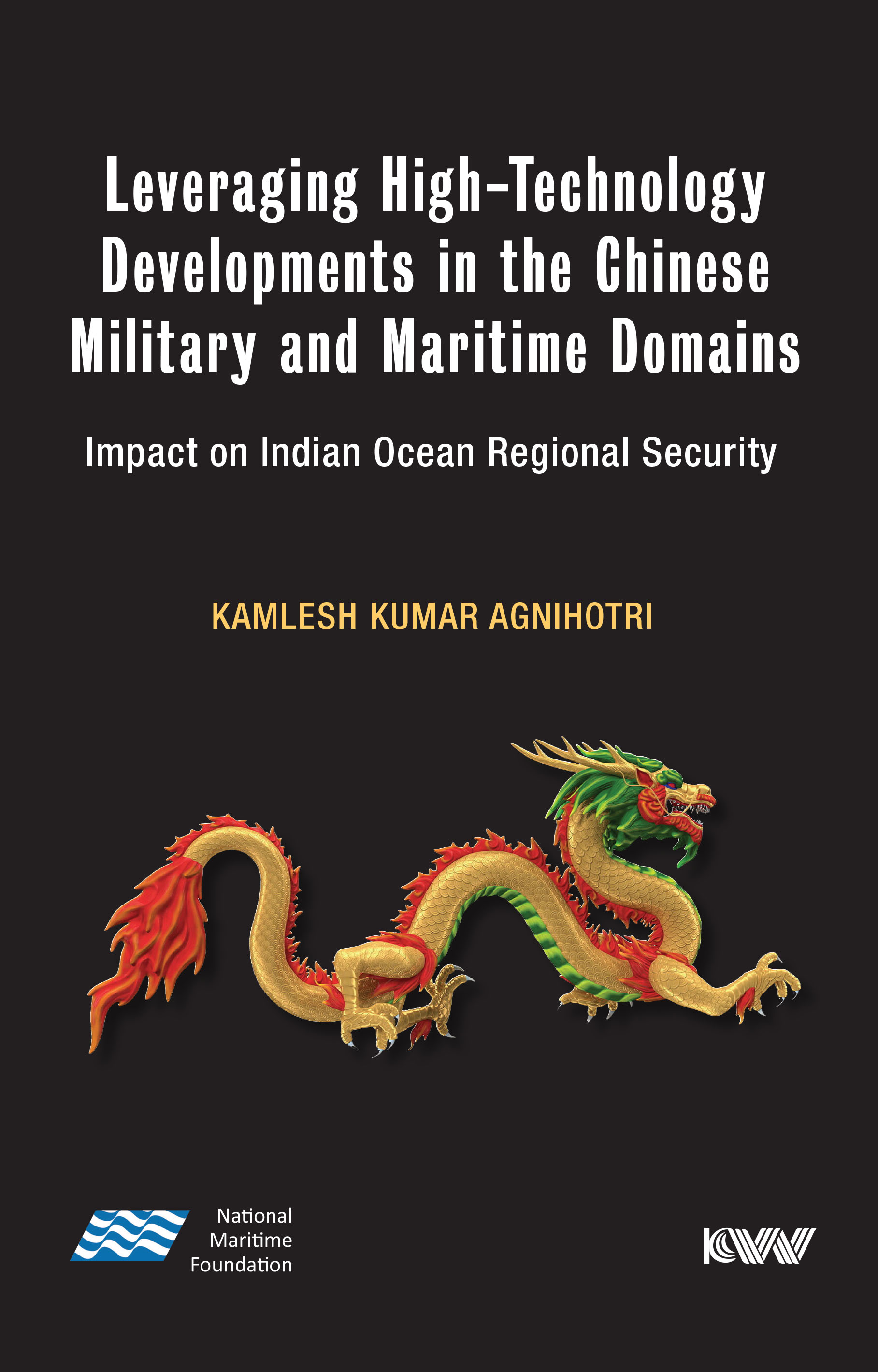China’s contemporary national security imperative as envisioned by her apex leadership, makes it incumbent upon its defence forces to rapidly transform from mechanised warfare to informationised one; and conduct joint campaigns involving multiple services instead of single force operations.
This book is accordingly premised on the ongoing reality of the Chinese Peoples’ Liberation Army (PLA) modernising at an accelerated pace, with the aim of becoming a force capable of countering world class adversary under informationised conditions by 2050; and the operational effectiveness of the Chinese defence forces getting enhanced manifold, if the Country is able to leverage certain high technologies in its national, maritime, and military domains, for combat use.
These emerging high-technologies include advances in artificial intelligence; space-based quantum communications; applications related to electromagnetic drives, such as rail guns and electromagnetic aircraft-launch systems; other niche weapons and platforms such as hypersonic weapons, anti-ship ballistic missiles, unmanned and artificial intelligence-enabled vehicles – UAVs, USVs and UUVs.
The book further discusses the impact of such high-technology-based Chinese naval presence in the Indian Ocean Region – specifically, security implications for India in her primary areas of maritime interests; and offers valuable recommendations for the Indian security-strategists, policymakers, scientific community, and maritime practitioners.
Kamlesh Kumar Agnihotri
Captain Kamlesh Kumar Agnihotri (Retd) is a Senior Fellow at the National Maritime Foundation (NMF). Prior to this assignment, he was a Senior Fellow at the Centre for Joint Warfare Studies (CENJOWS), New Delhi, till his retirement in June 2021. His specialised field of work for last 15 years, has been on Chinese Defense Forces, particularly the Chinese Navy. His current areas of Study include Chinese maritime issues, Indian Ocean security matters and the complex dynamics in the broader Indo-Pacific Region.
He has earlier worked at the Maritime Doctrine and Concepts Centre (MDCC) at Mumbai in the Strategic Maritime Assessment Team (SMAT); where he carried out detailed measurement of China’s maritime and naval capabilities relating specifically to the Chinese Navy’s platforms, equipment, training effort, technological ascendency and evolving operational patterns. Foundation for this intensive research was laid during his tenure at the Maritime Warfare Centre (MWC), Visakhapatnam; where he was involved with detailed planning for addressing the increasing intensity and frequency of Chinese naval presence in the Indian Ocean Region.
The Officer has had a prolonged tenure at NMF earlier too, during which, he developed specialised knowledge-base on China and consolidated the same to a great extent. His in-depth knowledge of the China related security matters enabled him to publish four books, and author several research articles in various think tanks’ Journals. His last book titled Strategic Direction of the Chinese Navy: Capability and Intent Assessment was published in 2015.
He is a naval missile and Gunnery specialist. He commanded a Landing Craft Utility ship (LCU) at the Andaman and Nicobar Islands. He is a qualified Remote Sensing, satellite imagery interpretation and Photogrammetry analyst. He also acquired an Advanced Diploma in Chinese language in order to complement his scholarly and research work.
Contents
Foreword
Preface
List of Figures, Tables and Boxes xix
List of Abbreviations
1. Introduction
Made in China (MIC) 2025 InitiativeLimitations to Accelerated Adoption of S&T
Structure of the Book
2. High-Technology Developments in China that can be Leveraged for Military Applications
Section I: Artificial Intelligence
Section II: Quantum Communication – Terrestrial and Space-based
3. High-Technology Developments in the Chinese Military Domain
Section I: Hypersonic Glide Vehicles
Section II: Anti-Ship Ballistic Missiles (DF-21D and DF-26)
Section III: Unmanned Aerial Vehicles and Unmanned Combat Aerial Vehicles
4. High-Technology Developments in the Chinese Maritime Domain with Potential for Naval Applications
Section I: Unmanned Surface Vessels
Section II: Deep Underwater Research Manned/Unmanned Submersibles
Section III: Underwater Hydrological Conditions Collation and SOSUS-like Surveillance Networks
5. High-Technology Developments in the PLA Navy to Increase its Operational EffectivenessSection I: Special Purpose Ships
Section II: High-Technology Equipment for Naval Vessels
6. Implications for India and Indian Maritime Sphere
Section I: High-Technology Developments of Military Relevance in India
Section II: Level of Technological Prowess in Select Technologies – A Comparison between China and India
Section III: Implications for Indian Maritime Domain
7. Conclusion
Probable Scenarios in the IOR Impacting Indian Security
Key Areas of Technological Concern to Address the Chinese Naval Challenge in IOR
Mitigating the Perceived Concerns/Shortcomings
Final Words
Endnotes
Index


 Political Science
Political Science
